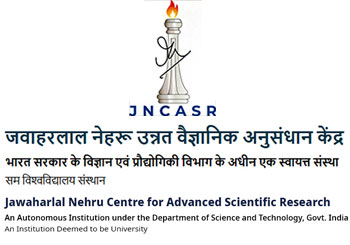Our Earth In the Sky
Developed and produced by Education Technology Unit
Contributors:
Ideas, Text & Narration: Indumati Rao
Graphics, Collation & Presentation: Indumati Rao, Jatinder Kaur, Sanjay S.R. Rao.
Development: Jatinder Kaur
The interactive CD-ROM 'Our Earth in the Sky' examines the various aspects of the fascinating night sky. However, it is not restricted to elementary astronomy.
It explores the scientific basis of many natural phenomena that take place around us.
The main objectives of the CD-ROM Our Earth in the Sky are to educate, entertain and to encourage the spirit of enquiry in the user. We also hope to sensitize the user to the wonders of the sky above.
We want to emphasize again and again the fact that we are also in the sky, but only as a mere speck in the vast universe. A knowledge of sky-watching or elementary astronomy develops the power of observation and scientific attitude. Knowledge that our planet is only a minute speck in the vastness of the universe plays an important part in developing a balanced view of the world.
Also, a student viewing the package will become more aware of the natural phenomena that daily unfold before our unseeing eyes.
We have tried to relate the topics in the modules to geography, physics, mathematics and to a small extent to chemistry.
Our Earth in the Sky has many visuals/graphics, animations, to illustrate the concepts. Special features of this CD-ROM are the extensive coverage of content supplemented by visuals - both graphics and animations, the Hot Text where special terms and phrases are explained in depth separately. In addition, it has navigation features such as glossary, notepad, search to make the CD-ROM user friendly.
All these features will help the viewer to understand and process the information better.
This package has six modules, each module is complete by itself with a quiz to test the understanding of the topics in a particular module.
The modules can be viewed in any order.
The CD-ROM can be used as source material by teachers and students of ICSE, CBSE and State Boards.
The six modules are:

In the module Astronomy from BC to AD, we trace the contributions of astronomers of various cultures.
The unknown astronomers of the Incas, Aztecs, Anasazis, Babylonians etc. are highlighted. Astronomy in India was highly developed even though the contributions of Aryabhatta, Bramhagupta and others were not recognized earlier. They were aware of the heliocentric system much before Copernicus, Galileo and Kepler. We want our users to salute their genius. In addition to giving detailed information of the path breaking discoveries of Copernicus, Galileo and Kepler, the CD-ROM presents them from the human angle.
The module Sun - Our Special Star starts with sunworship in various cultures and takes the viewer through the scientific understanding of the most important star for us in the Universe. The Sun is our wondrous source of energy and light.
In addition to giving statistical details the module explores the unique relationship between the Sun and the Earth. The Sun is at the centre of almost all the natural physical phenomena that takes place on earth. Many interesting questions like, `what is the special relation between the Sun and the earth?, Why is life in all its diversity, found only on earth?, What would have happened if the earth’s orbit were closer to Mercury or farther than Mars?, Does the Sun have a life cycle?, Why is the sky blue?, and many more are posed and answered.
The highlights of this module are the rich graphics and animations.
In olden times, there were no street lights or lights from the houses. People could spend more time gazing at the distant points of light in the sky - the stars and wonder about them. They saw patterns, and the mysterious night sky inspired them to weave stories and myths. The bond between the vast sky above and the humans who thought they were the masters of the universe is presented in the module Constellations or patterns in the sky.
The users are encouraged to go out and look at the night sky and see the patterns change according to geography and seasons. The module Eclipses and Seasons deals with the two natural phenomena that are of great interest to us. Eclipses have always inspired awe in human beings, especially the total solar eclipse or darkness at noon.
Whether it is in geography or in physics, questions are asked about why does not the solar eclipse occur every new moon day?
Or the lunar eclipse on every full moon day? This fundamental question is answered with the help of diagrams and graphics.
A special feature of the eclipse section of this module is tracing the path of the last eclipse of the first millennium.
Seasons affect human activities most. The relationship between the earth’s axis, revolution of the earth and the season are presented through animation. The reason for opposite seasons in the two hemispheres and in different latitudes are explained clearly.
Eclipses and seasons are presented in the same module as both of these phenomena are the result of the position of the earth during its journey around the Sun.
You may ask `All this is fine. But how can we do skywatching? Where can we get the optical aids to view the sky? ‘ In the module Fabricating Instruments,
detailed instructions for making your own optical aids like sundial, refracting and reflecting telescopes, constellariums, astrolabe and Foucault pendulum are taken up for construction. It is with such simple optical aids that early astronomers made their fundamental discoveries. There are many suggested activities in the Module Activities. Interested teachers can use these to motivate students.
The first four modules have a detailed quiz section to test your understanding. We hope that this CD-ROM will fuel your curiosity to understand the mysteries of the night sky. Our objectives will be fulfilled if you begin to look up in wonder at the Universe. Now it is truly yours to explore.
- Back to previous page
- |
-
Page last updated date:11-03-2025 06:20 PM























